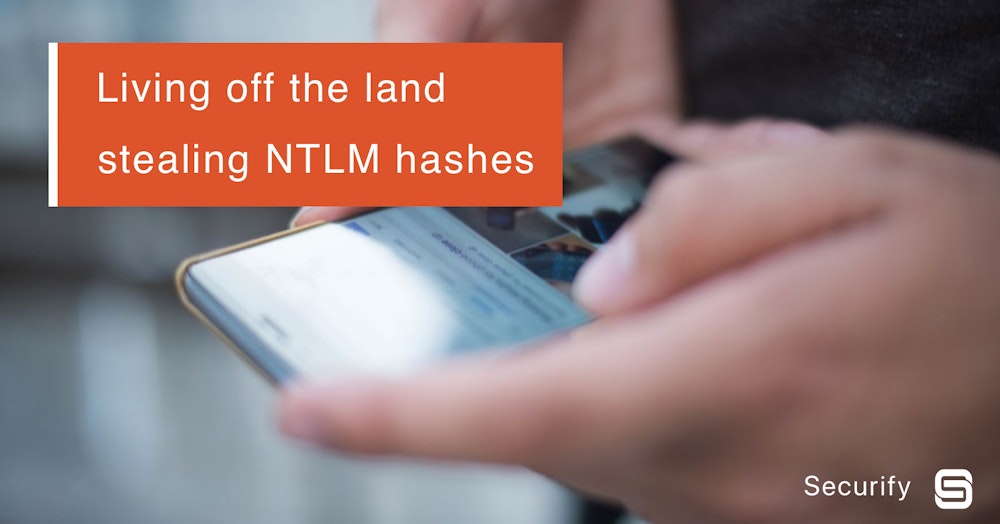Rare SMB Connection to the Internet
This rule detects rare internet network connections via the SMB protocol. SMB is commonly used to leak NTLM credentials via rogue UNC path injection.
Elastic rule (View on GitHub)
1[metadata]
2creation_date = "2023/12/04"
3integration = ["endpoint", "windows"]
4maturity = "production"
5updated_date = "2024/05/21"
6
7[rule]
8author = ["Elastic"]
9description = """
10This rule detects rare internet network connections via the SMB protocol. SMB is commonly used to leak NTLM credentials
11via rogue UNC path injection.
12"""
13from = "now-9m"
14index = ["logs-endpoint.events.network-*", "winlogbeat-*", "logs-windows.sysmon_operational-*", "endgame-*"]
15language = "kuery"
16license = "Elastic License v2"
17name = "Rare SMB Connection to the Internet"
18references = ["https://www.securify.nl/en/blog/living-off-the-land-stealing-netntlm-hashes/"]
19risk_score = 47
20rule_id = "f580bf0a-2d23-43bb-b8e1-17548bb947ec"
21severity = "medium"
22tags = [
23 "Domain: Endpoint",
24 "OS: Windows",
25 "Use Case: Threat Detection",
26 "Tactic: Exfiltration",
27 "Data Source: Elastic Endgame",
28 "Data Source: Elastic Defend",
29 "Data Source: Sysmon",
30]
31timestamp_override = "event.ingested"
32type = "new_terms"
33
34query = '''
35event.category:network and host.os.type:windows and process.pid:4 and
36 network.transport:tcp and destination.port:(139 or 445) and
37 source.ip:(
38 10.0.0.0/8 or
39 172.16.0.0/12 or
40 192.168.0.0/16
41 ) and
42 not destination.ip:(
43 10.0.0.0/8 or
44 127.0.0.0/8 or
45 169.254.0.0/16 or
46 172.16.0.0/12 or
47 192.0.0.0/24 or
48 192.0.0.0/29 or
49 192.0.0.8/32 or
50 192.0.0.9/32 or
51 192.0.0.10/32 or
52 192.0.0.170/32 or
53 192.0.0.171/32 or
54 192.0.2.0/24 or
55 192.31.196.0/24 or
56 192.52.193.0/24 or
57 192.168.0.0/16 or
58 192.88.99.0/24 or
59 224.0.0.0/4 or
60 100.64.0.0/10 or
61 192.175.48.0/24 or
62 198.18.0.0/15 or
63 198.51.100.0/24 or
64 203.0.113.0/24 or
65 240.0.0.0/4 or
66 "::1" or
67 "FE80::/10" or
68 "FF00::/8"
69 )
70'''
71
72
73[[rule.threat]]
74framework = "MITRE ATT&CK"
75[[rule.threat.technique]]
76id = "T1048"
77name = "Exfiltration Over Alternative Protocol"
78reference = "https://attack.mitre.org/techniques/T1048/"
79
80
81[rule.threat.tactic]
82id = "TA0010"
83name = "Exfiltration"
84reference = "https://attack.mitre.org/tactics/TA0010/"
85
86[rule.new_terms]
87field = "new_terms_fields"
88value = ["destination.ip"]
89[[rule.new_terms.history_window_start]]
90field = "history_window_start"
91value = "now-7d"
References
Related rules
- First Time Seen Removable Device
- Code Signing Policy Modification Through Registry
- Command Shell Activity Started via RunDLL32
- Conhost Spawned By Suspicious Parent Process
- Creation of a Hidden Local User Account
